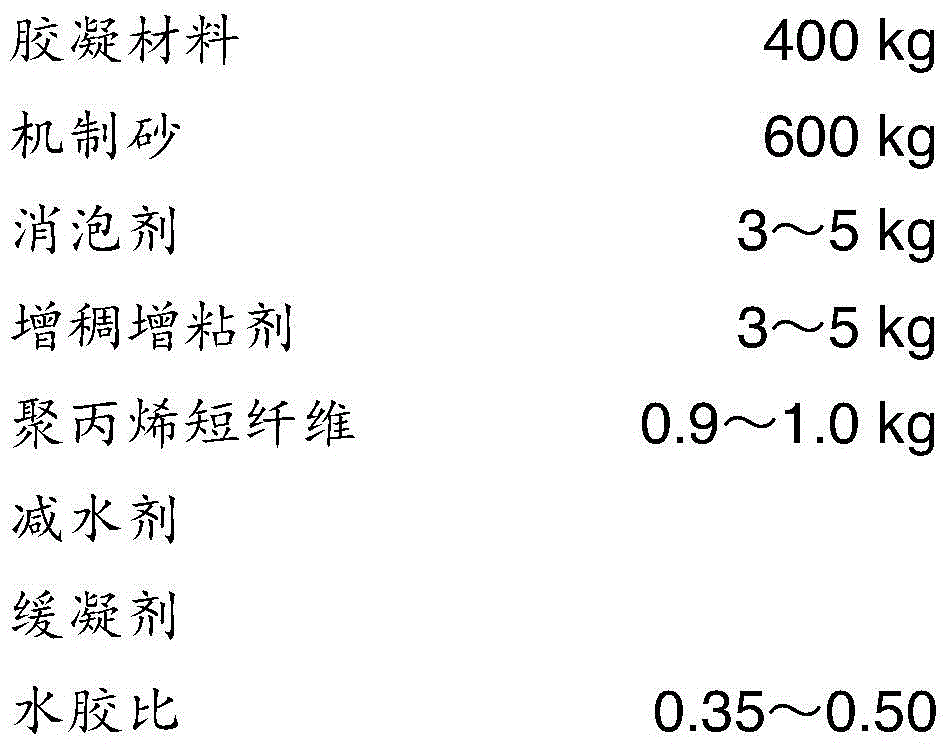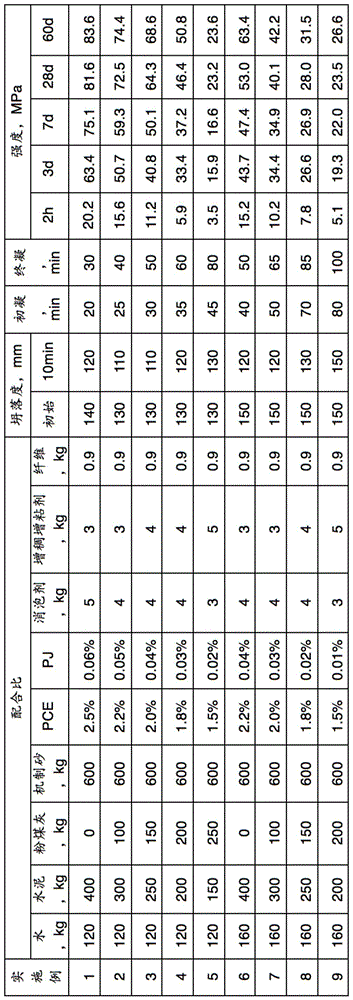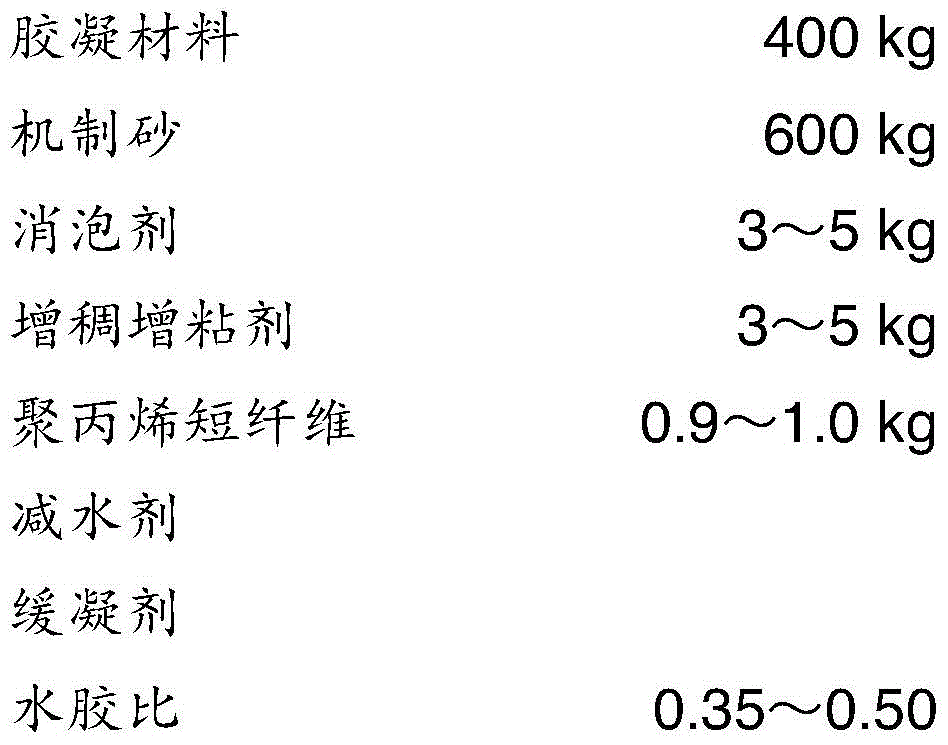Cement-based material used for building 3D (three-dimensional) printing
A cement-based material and 3D printing technology, applied in the field of cement-based materials, can solve the problems of high brittleness, decreased strength of cement-based materials, and lack of scale for 3D printing, achieving the effects of low cost, good shaping, and high early strength.
- Summary
- Abstract
- Description
- Claims
- Application Information
AI Technical Summary
Problems solved by technology
Method used
Image
Examples
Embodiment Construction
[0019] Below in conjunction with embodiment do specific explanation.
[0020] The raw materials used in the following examples are as follows:
[0021] Cement: Sulphoaluminate cement, grade 42.5, produced by Shandong Qufu Zhonglian Cement Co., Ltd.; its 3d strength is 36.4MPa, 28d strength is 46.8MPa, and 60d strength is 48.8MPa.
[0022] Fly ash: Class II ash, produced by Feixian Power Generation Co., Ltd. in Linyi City, Shandong;
[0023] Machine-made sand: use a certain type of machine-made sand produced by Zaozhuang Jinshan Machinery Co., Ltd., with a particle size of 0.075mm-5mm;
[0024] Defoamer: tributyl phosphate, analytically pure, produced by Liqiang Factory in Panyu, Guangzhou;
[0025] Thickening and viscosifying agent: 108 glue, powder, produced by Beijing Wanji Jianye Group Co., Ltd.;
[0026] Polypropylene staple fiber (hereinafter referred to as fiber): length 6mm, produced by Langfang Xiangyu Chemical Co., Ltd.;
[0027] Polycarboxylate superplasticizer P...
PUM
| Property | Measurement | Unit |
|---|---|---|
| slump | aaaaa | aaaaa |
| strength | aaaaa | aaaaa |
| strength | aaaaa | aaaaa |
Abstract
Description
Claims
Application Information
 Login to View More
Login to View More - R&D
- Intellectual Property
- Life Sciences
- Materials
- Tech Scout
- Unparalleled Data Quality
- Higher Quality Content
- 60% Fewer Hallucinations
Browse by: Latest US Patents, China's latest patents, Technical Efficacy Thesaurus, Application Domain, Technology Topic, Popular Technical Reports.
© 2025 PatSnap. All rights reserved.Legal|Privacy policy|Modern Slavery Act Transparency Statement|Sitemap|About US| Contact US: help@patsnap.com



